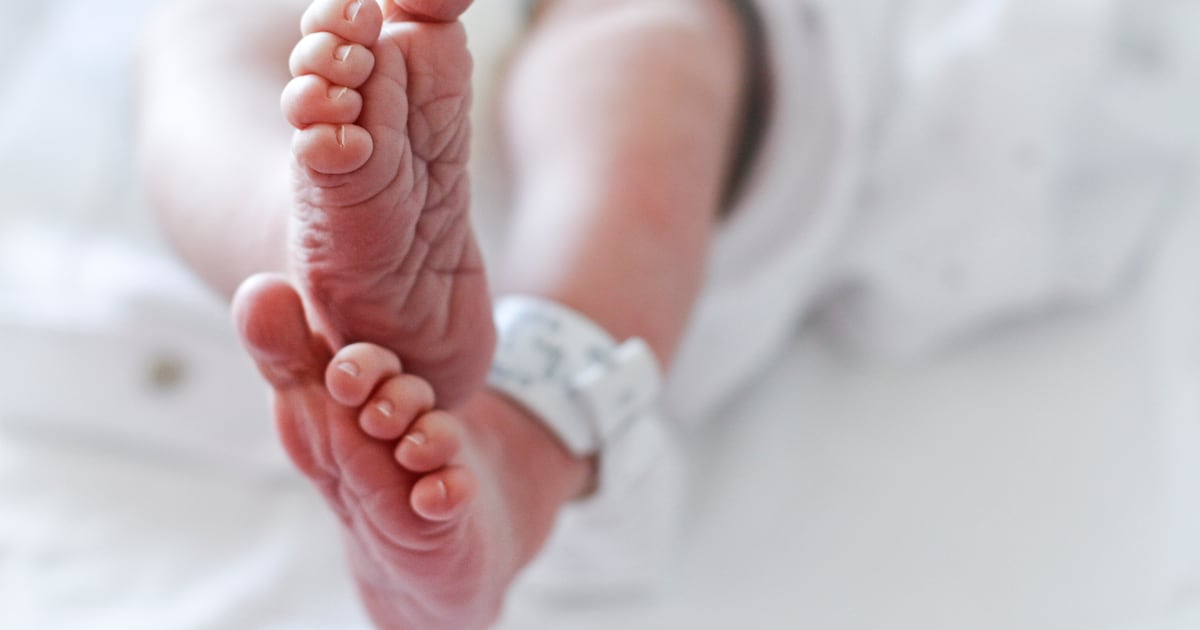Health
Record Births Among Older Mothers Mark Key Demographic Shift

A remarkable trend in maternal age is emerging in Ireland, with a record high of 408 babies born to women aged 45 years and older in 2023. This figure, reported by the Central Statistics Office (CSO), represents a significant increase of 80.5 percent compared to a decade earlier in 2013. The findings are detailed in the CSO’s Vital Statistics Annual Report, which highlights shifts in birth patterns across various age groups.
In stark contrast, the number of births to women under the age of 20 has decreased dramatically. The report indicates that births in this age group fell by over half, from 1,380 in 2013 to 683 in 2023. This decline reflects broader societal changes and evolving family planning practices among younger women.
The average age of mothers in Ireland has also risen, now standing at 33.2 years, marking a 3.1 percent increase since 2013. Over the last decade, the total number of births in Ireland has seen a decline of more than 20 percent, raising questions about future demographics and societal impacts.
Infant Mortality Rate and Longevity Insights
Despite the increase in older mothers, the report presents concerning statistics regarding infant health. In 2023, the infant mortality rate was recorded at 3.3 per 1,000 live births, which includes 135 neonatal deaths and 108 stillbirths. Additionally, there were two maternal deaths reported. These figures underscore the ongoing challenges in maternal and infant health care.
Interestingly, the report also sheds light on longevity, noting that 312 individuals aged 100 years and above were recorded in 2023, comprising 61 males and 251 females. This trend highlights an increasing life expectancy and possibly reflects improved healthcare systems.
Growing Up in Ireland Study: Insights on Twin Children
On the same day, the CSO released findings from the second part of a series focusing on twins from the Growing Up in Ireland (GUI) Cohort ’08 survey. The latest research paper investigates the lives of twin children at the age of 13, revealing that these children exhibit lower rates of engagement with general practitioner (GP) services compared to their singleton peers.
Notably, 70.3 percent of parents with twins reported that they had not consulted with a GP regarding their child’s physical, emotional, or mental health within the previous year. In contrast, this figure stood at 64 percent for parents of singleton children.
When examining physical activity, the study found that twin boys and singleton boys engaged in similar levels of exercise, with both groups outpacing their female counterparts. Approximately 24 percent of twin children indicated they exercised to manage their weight, compared to 31 percent of singleton children.
Social interactions also differed between the two groups. Twin children reported fewer new friendships upon starting secondary school, with 35.9 percent expressing strong agreement about making new friends, compared to 42.3 percent of singleton children. Furthermore, nearly half of the twin respondents lamented missing their old friends, highlighting the unique challenges they face in social settings.
The report’s findings paint a complex picture of family dynamics and health trends in Ireland. As older mothers continue to contribute to the birth rate, the implications for healthcare, social services, and community support systems will require careful consideration and ongoing research.
-

 Top Stories2 months ago
Top Stories2 months agoTributes Surge for 9-Year-Old Leon Briody After Cancer Battle
-

 Entertainment3 months ago
Entertainment3 months agoAimee Osbourne Joins Family for Emotional Tribute to Ozzy
-

 Politics3 months ago
Politics3 months agoDanny Healy-Rae Considers Complaint After Altercation with Garda
-

 Top Stories3 months ago
Top Stories3 months agoIreland Enjoys Summer Heat as Hurricane Erin Approaches Atlantic
-

 World4 months ago
World4 months agoHawaii Commemorates 80 Years Since Hiroshima Bombing with Ceremony
-

 Top Stories2 months ago
Top Stories2 months agoNewcastle West Woman Patricia Foley Found Safe After Urgent Search
-

 Top Stories4 months ago
Top Stories4 months agoFianna Fáil TDs Urgently Consider Maire Geoghegan-Quinn for Presidency
-

 World4 months ago
World4 months agoCouple Convicted of Murdering Two-Year-Old Grandson in Wales
-

 World4 months ago
World4 months agoGaza Aid Distribution Tragedy: 20 Killed Amid Ongoing Violence
-

 World4 months ago
World4 months agoAristocrat Constance Marten and Partner Convicted of Infant Murder
-

 Top Stories3 months ago
Top Stories3 months agoClimbing Errigal: A Must-Do Summer Adventure in Donegal
-

 Top Stories3 months ago
Top Stories3 months agoHike Donegal’s Errigal Mountain NOW for Unforgettable Summer Views









